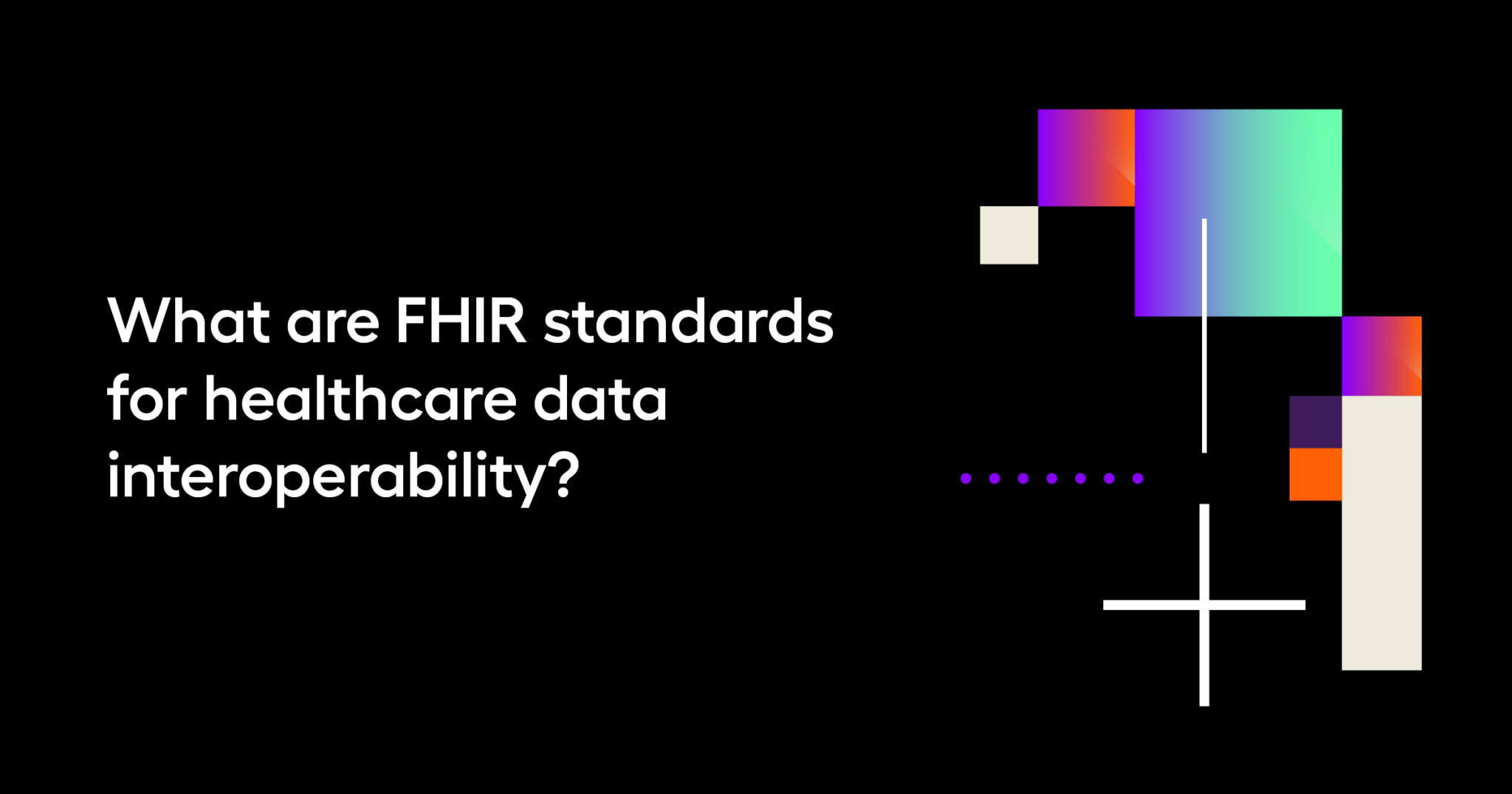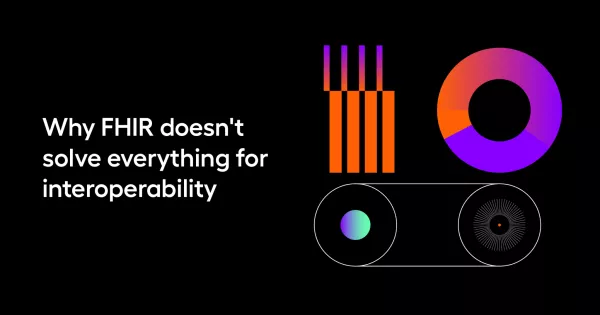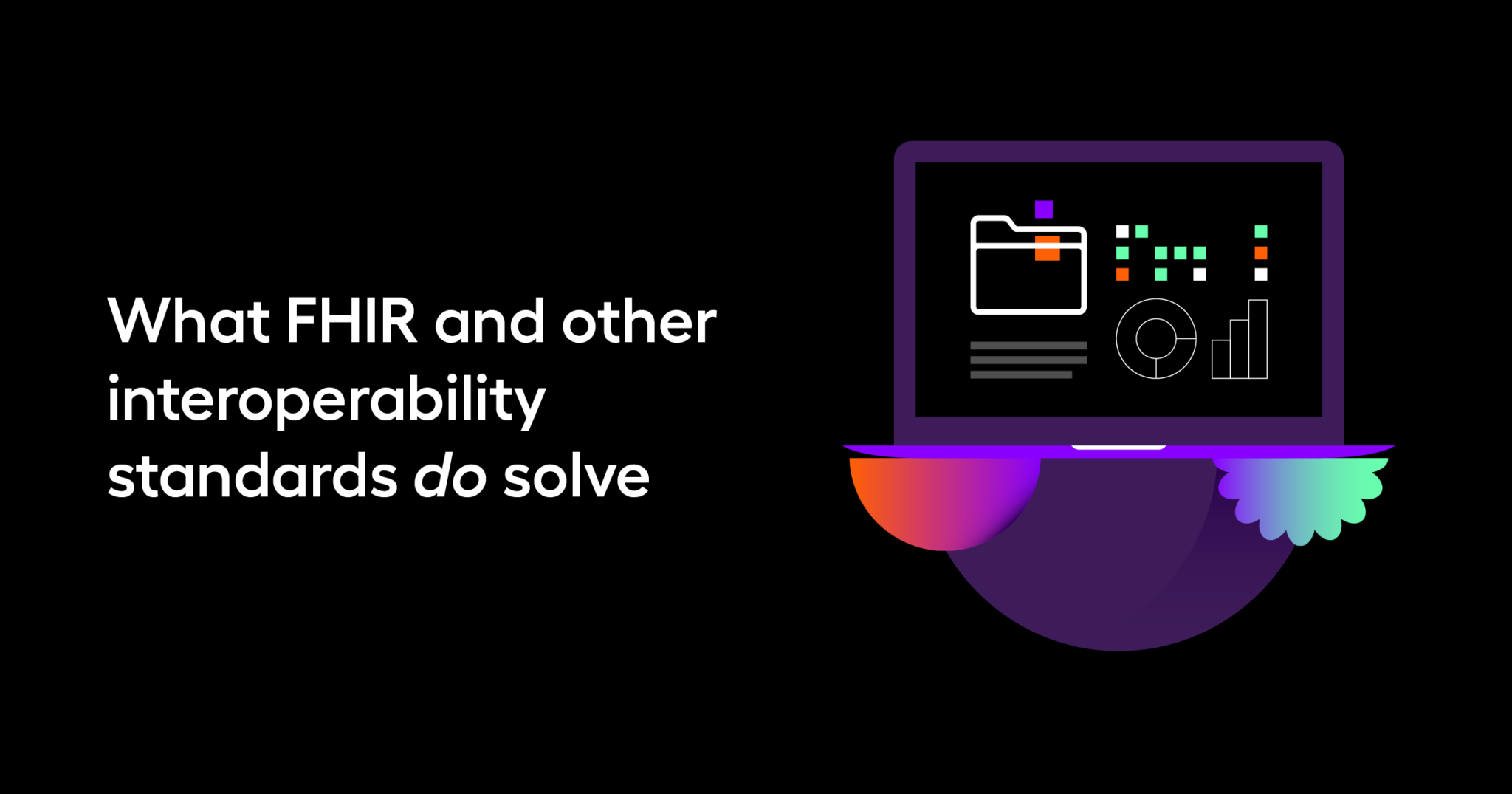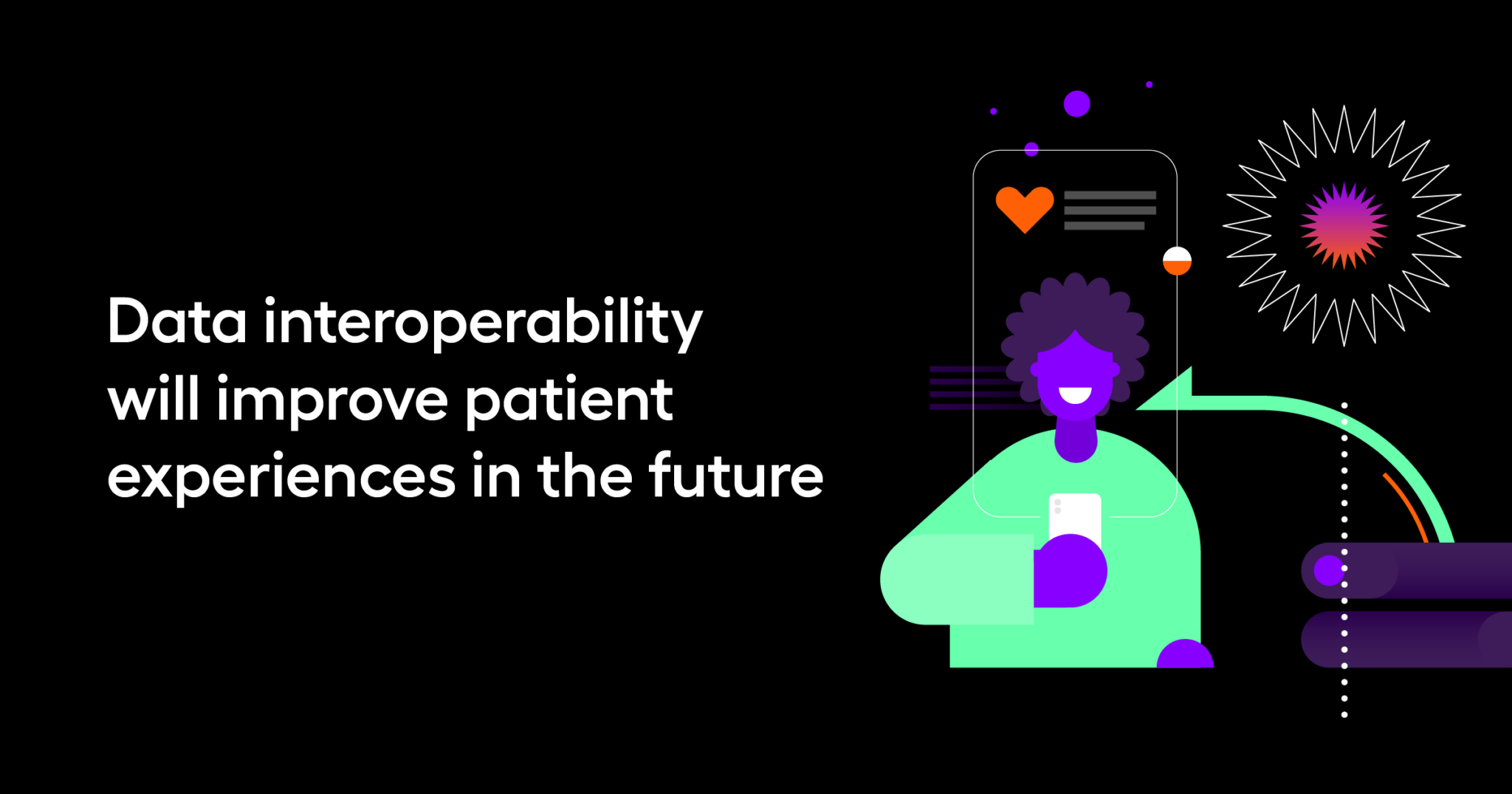FHIR: Benefits and limitations for whole-person care
Health care professionals are swimming in data, but at times it can feel like treading water in a murky swamp rather than gliding through a crisp, clear pool. That’s because of the lack of consistency in data capture, format, and exchange capabilities. And it’s why data interoperability, the ability of computer systems to exchange and use data, has become such a critical discussion point in the industry. One attempt at standardization that’s gaining traction is Fast Healthcare Interoperability Resources (FHIR).
Arcadia recently hosted a webinar “We Didn’t Start the FHIR” to walk listeners through the benefits and limitations of FHIR as it relates to whole-person care. Arcadia Vice President of Product Management, Brendan Smith-Elion, facilitated a dynamic discussion between experts Elise Kohl-Grant, CIO at Innovative Management Solutions NY and Jonathan Cook, CTO at Arcadia.
Within the webinar, Cook uses the metaphor of mailing a letter to describe the four layers of interoperability:
- Foundational: “trying to get a letter to a new location.”
- Structural: “can you read what I’ve written?”
- Semantic: “does my word equal your word?”
- Government policy and legal aspects: “who can see the letter?” and “how do I secure the letter and how long do I hold it?”

What are FHIR standards for healthcare data interoperability?
FHIR standards offer a way to represent and share information among clinicians and organizations in a standard way regardless of the ways local EHRs represent or store the data. FHIR is made up of foundational, infrastructure, administrative, data exchange, and clinical reasoning capabilities. They facilitate sharing of health care records between providers, networks, and beyond.
According to HealthITBuzz, as of 2019, 84% of hospitals and 61% of clinicians have adopted and implemented 2015 Edition certified API technology enabled with FHIR.
We want to get to the point of a Google Doc where it’s more than a bidirectional exchange, but a continuum of information that’s flowing in a cycle.
— Elise Kohl-Grant, CIO at Innovative Management Solutions NY
“When it comes to FHIR, we’re at the peak or just over the peak where we’re just starting to do the work,” said Kohl-Grant. “We’re pretty good at bidirectional exchange and at the tip of the iceberg for collecting social determinants of health data, but we’re not there yet.”
“We want to get to the point of a Google Doc where it’s more than a bidirectional exchange, but a continuum of information that’s flowing in a cycle,” she added.

Why FHIR doesn’t solve everything for interoperability
FHIR is a good start, but it hasn’t fully enabled that continuum of information cycle Kohl-Grant described.
“FHIR won’t solve all of your problems today. There’s still a lot that has to evolve and mature in the market and in the healthcare space,” said Cook.
One reason FHIR isn’t a perfect solution yet is that standards only take us so far. While technical standards might meet the need, often, application of the standards is inconsistent.
“There’s a huge amount of variance in the way that the screener is presented to the patient,” said Smith-Elion.
Providers can also have a hard time capturing the data because of barriers outside of technical standards such as patients not wanting to share their race.
Additionally, providers don’t all use the same functionality. They can input wrong data, enter it in different locations, and enter a lot of information in unstructured case notes. It can be hard to decipher where that information should sit when transferring it to different datasets.
“Just because we have more data flowing now, we don’t necessarily know the context of how the data was acquired or how it was aggregated,” said Smith-Elion. “You really need data governance to understand if that mapping was done as expected.”

Limitations of current adoption of FHIR
FHIR is the right way forward, but there are limitations and adoption problems across the network. Some major EHRs do not have FHIR capability. Therefore, getting to the finish line will require a level of customization.
Cook advises providers to start from their use case.
“If you’re working in population health and whole-person care, you’re going to want the ability to do risk adjustments and get that data back at the point of care. You’re going to want to drive additional insights (quality gaps) back at the point of care and does your FHIR server and your mapping have that defined?,” explained Cook.
He says in the case of risk, there is no definition that will map to specific risk in FHIR currently so you’ll have to use an extension (customization).
The industry is also starting to knock down doors of data blocking, but the effort is still focused on encounter-based medical records, which aren’t a whole-person care aggregate.
Cook outlines a few issues of concern:
- How to manage risk contracts?
- How to do analytics across the network?
- How to get measure calculations and get them back into the point of care?
“Is FHIR going to solve them? The answer is no,” he said. “Not that it can’t solve it, but it’s not a silver bullet out of the box, you’re going to have to do some work.”

What FHIR and other interoperability standards do solve
FHIR has helped the industry achieve several levels of success. Through interoperability, we’ve seen:
More opportunities for capturing data in social determinants of health (SDoH) and health equity — when all of the providers are on the same assessment they can more easily normalize data.
“Get a library of standard assessments and start a committee of providers and vote on the assessment you want to use in your community,” said Kohl-Grant. “Get the person in the front lines in that meeting — they’re the ones that talk to the individuals and can understand if a question is too uncomfortable.”
Smith-Elion notes the industry is now required to collect this type of data that was not enforced previously.
“You need to think about how you’re capturing and governing that data so that when you’re participating in ACO Reach or other government initiatives you’re actually achieving whole-person care,” he added.
Kohl-Grant thinks incentivizing providers is very important.
“I know that there’s not a national program that incentivizes providers to do those assessments or capture Z codes, but if you can get a grant for a mini meaningful use for your providers it’s going to make a huge difference in that data capturing functionality,” she said.
Enhanced data capture and sharing — providers are able to tap into insights from other providers and health networks.
“Networks of providers are coming together to leverage existing standards and establish their own processes so you can centralize your own data and do more with it and create more structured interventions,” explained Kohl-Grant. “This helps folks learn from one another.”
Specific app to app use cases — bidirectional, two-way sync enables both clinical and technical interoperability. SMART on FHIR apps allow the ability to write an app that fires off an EHR to give providers a single pane of glass to see what they need to see. It eliminates multiple logins to multiple systems.
In fact, Arcadia’s Epic HCC Risk Suspecting App allows providers to surface actionable population health insights at point of care. Arcadia aggregates claims, clinical, and ancillary data and enriches it with a proprietary risk suspecting engine. Diagnosis-level suspected, historical, and persistent documented conditions are surfaced in Epic’s BPA HCC Risk Adjustment workflow through FHIR integration. Suspected diagnoses from Arcadia are automatically written to the Epic problem list, where the provider can review and reconcile directly within their workflow to generate billable codes.

Data interoperability will improve patient experiences in the future
The vision of the future of healthcare is a world where data interoperability will enable seamless patient experiences and providers will have more tools at their disposal to deliver better whole-person care. FHIR is a great step forward in improving the flow and clarity of the data pool. Its continued growth and adoption will help providers serve their populations more effectively.
Have questions? Watch the on-demand webinar or contact Arcadia to learn more.
